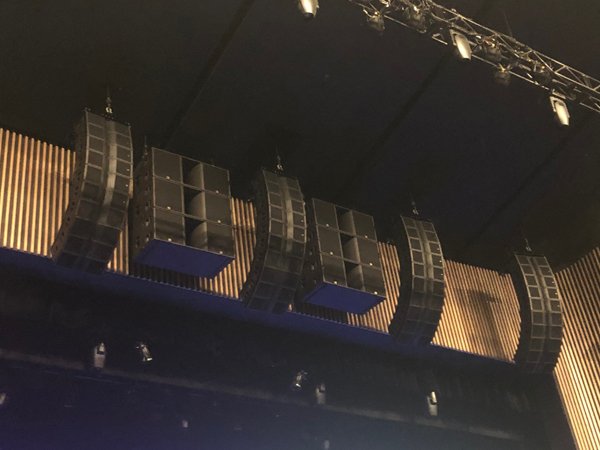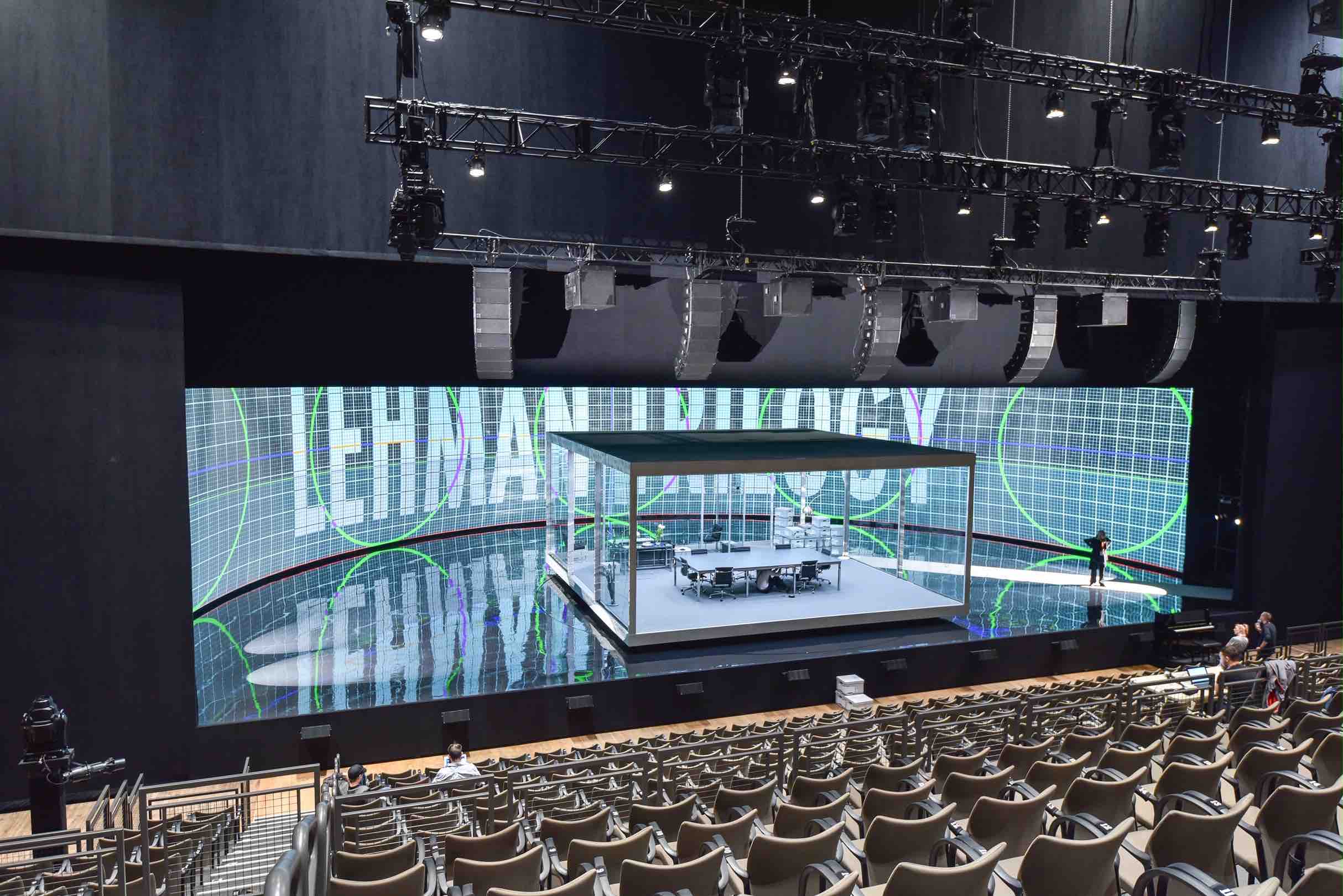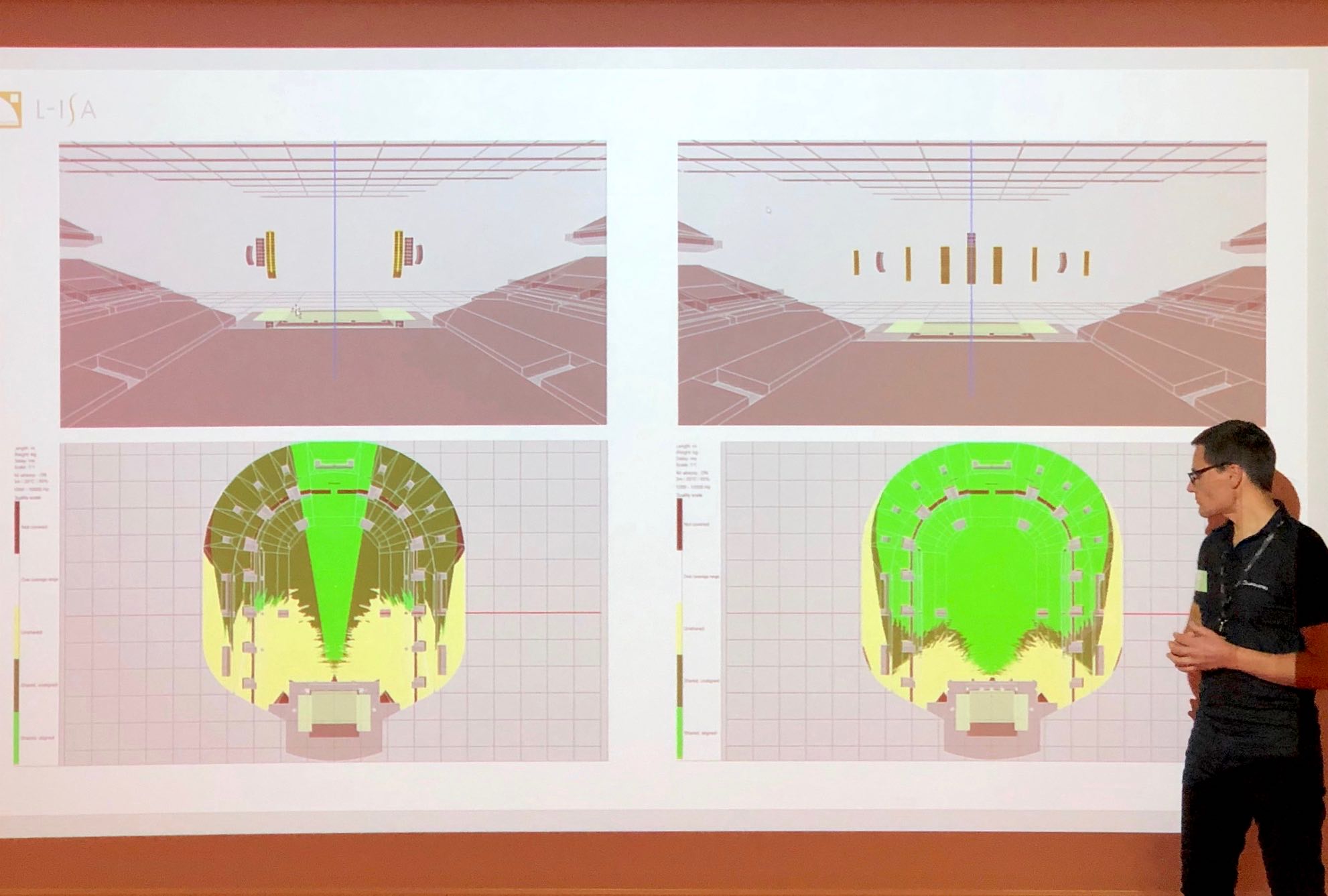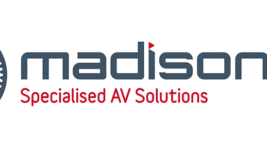News
17 Dec 2019
Immersive Live Sound – The Story So Far
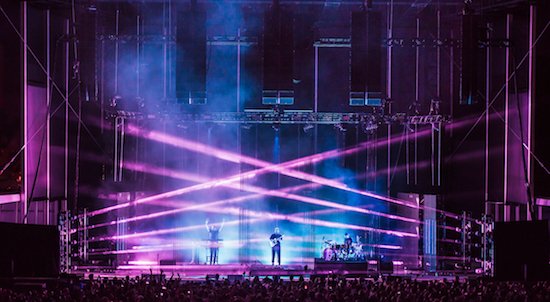
Subscribe to CX E-News
AUDIO
Immersive Live Sound – The Story So Far
Two years ago Immersive Audio or Spatial Live Sound rolled out into the live audio market simultaneously from L-Acoustics (France) with L-ISA, and d&b audiotechnik (Germany) with Soundscape. CX travelled to both manufacturers to hear the systems and talk to the engineers in October 2017.
Our December 2017 edition leader shouted: ‘The Revolution has arrived! Spatial audio mixing – sound for the stage’. Many were excited, some cynical, but while it is taking time, the revolution truly has arrived.
Next month many audiences will start to hear the first large venue installation at Sydney’s new Coliseum Theatre located at Rooty Hill. The Coliseum installation is a basic frontal system of five hangs across the proscenium which is the minimum required for the DSP to make the magic.
Put simply, where previously you had left and right stereo, or LCR, in reality you were really using a loudspeaker system as dual or triple mono since only a narrow slice of seats at the centre of the room got any separation. With these new systems, those five (or more) front speakers, allied with the DSP and the proprietary software each supplier offers, take on an entirely new form, becoming one cohesive sound field.
In that field, you can place any of your mixer inputs into a three dimensional field. Anyone who hasn’t heard it is by about now getting confused about 3D, 5:1, surround sound and thinking of systems like Meyer’s Constellation that does a different job by transforming dead venue spaces into apparent orchestral halls.
Immersive Audio is different. There are many benefits, I’ll break them down here.
It Sounds Better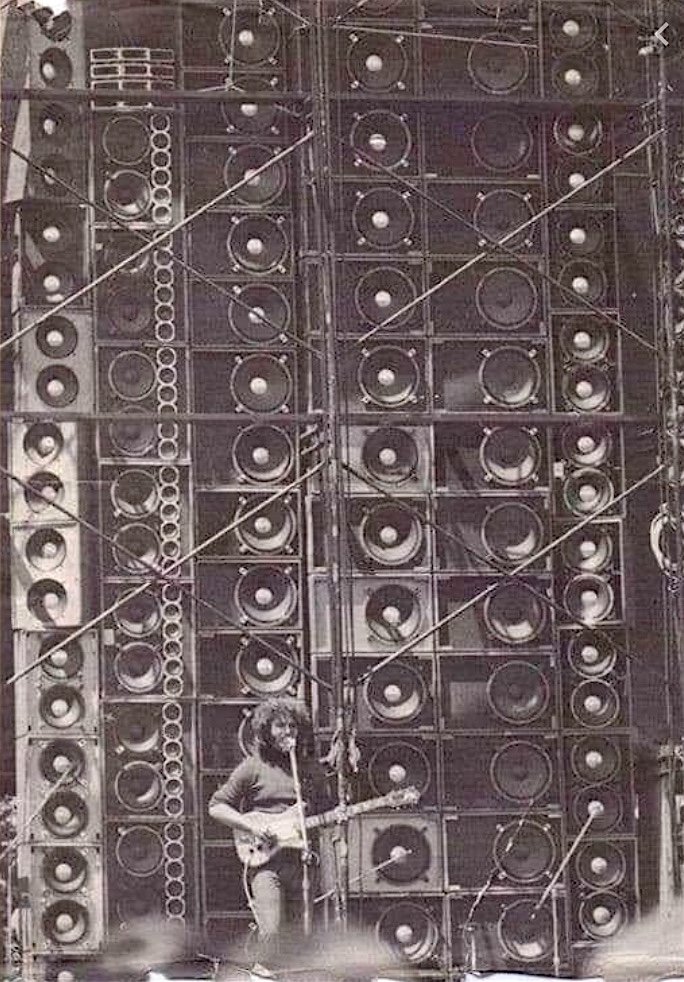 As The Grateful Dead proved with their epic Wall of Sound in the early 1970s, sending individual instruments and voices to individual speakers improves clarity. It made for a whole lot of expense and interference as well, so it never took off.
As The Grateful Dead proved with their epic Wall of Sound in the early 1970s, sending individual instruments and voices to individual speakers improves clarity. It made for a whole lot of expense and interference as well, so it never took off.
Yet consider what we expect a concert system to do – each element (speaker box) of a line array is dealing with everything within its frequency response range. There is a chaos of sound coming out of each element.
But if you have five sets, each handling numerically less instruments and voices, it will and does sound clearer and perceptibly quieter, even at the same SPL as a normal system. These benefits are proven when listening to one of these systems.
In use, the live sound engineer mixes the show in the normal fashion, but each input channel is shared over to the system processor post EQ and post dynamic section (gates, limiters). The regular system output of left and right also goes off the processor. (d&b have the DS100, while L-Acoustics call theirs the L-ISA processor.)
At the processor, a graphic user interface allows each input to be placed anywhere in the field, with the processor then deciding how much of it will go to one, some, or all of the speakers in the field. DiGiCo, Avid, and some other console brands have or will offer a plug in for each channel that allows joystick placement, right off the console screens.
With some shows there is a new and exciting audio specialist you may call a ‘Spatial Engineer’ doing the placements. Some shows don’t need anything to move once set, others have programmed complex cues and automations. In every case, in use the system disappears and the artists come forward.
Even a straightforward concert rock band sounds larger and better when the sound field puts everything back into the stage space from where the sound starts.
We have been so conditioned to the compromise of left-right speaker placement that it takes something totally different to show change.
But What And Why?
Aerosmith have a residency now in Vegas, and that system follows the singer as he moves around the stage. This can be done manually, or using a tracker. Broadway and West End theatre audio designers are doing this now as well – an actor’s voice moves with them.
One example is a Soundscape system for a show called Lehman Trilogy (see picture). It has three actors in a glass box on stage with a video wall behind them. Soundscape is used to ensure that everyone in the 1,000 to 1,200 capacity tiered venue believes that they are inside that box with the actors and that there is no amplification.
An orchestra is the ultimate implementation for these systems, and that was what I saw in real life this September in Krakow Poland at an L-ISA show. With that one-off production, the audio crew came in at 1 AM, and by 5 AM had hangs (five hangs of 12 Kara, and two hangs of nine Kara) done. Rehearsals started mid-morning after consoles and programming.
There are large scale touring productions using these systems, and once integrated, setup times for five to seven hangs are very close to what you’d expect with two larger, heavier, hangs of PA.
So far we’ve only talked about the frontal sound field, but all these systems want you to hang more speakers in a circle around the venue – because they can deliver to them, and also so you buy or rent more speakers as well.
The EDM (Electronic Dance Music) producers are wild about this for massive festivals – and smaller tent venues as well. Early adopters are using it because they see the benefits. Mark Knopfler did an arena tour with L-ISA, Kraftwerk and Bjork are among many using systems for one-off shows.
Australia’s NW Group’s Marine AV division installed several systems on cruise liners recently.
The End – Of The Beginning!
L-Acoustics are now calling this ‘L-ISA Immersive Hyperreal Sound’ in full, while d&b keep it as ‘Soundscape’. Both firms are strangely similar in size, and they have both added about 25% more staff since these systems rolled out.
The one thing the two Europeans haven’t really started to do is to educate the mainstream concert and theatre reviewers on the benefits. Both firms sent me half a dozen reviews that touched on the sound in a positive light, but none of them understand why they were enjoying ‘clear, unusually good, live sound’.
My theory is the Europeans needed to roll this out at a controlled pace to avoid losing control of demand.
As it is, both firms boast thousands of shows already run, to millions of people. It is ‘mature technology’, they say, and on that these systems come with a fail-safe possibility that reverts all the speakers back to regular mono should the processor have a moment.
As to who is buying and who will buy? Production firms are starting to buy processors – NW Group, Novatech, and Elite in Canberra can all offer this enhancement to their systems. A rumoured demo theatre in Sydney will add momentum because it’s pretty obvious that the proof is in the listening.
While NW Group work on exciting their high rolling corporate event clients, thus encouraging them to spend more and get the best, the big five-star hotels and convention centres will start to get interested. It is not a two-horse race, but rather we look at the two market leaders battling it out, while Meyer Sound, Barco’s Iosono, Astra, Meuller-BBM, and new entrants are rushing in.
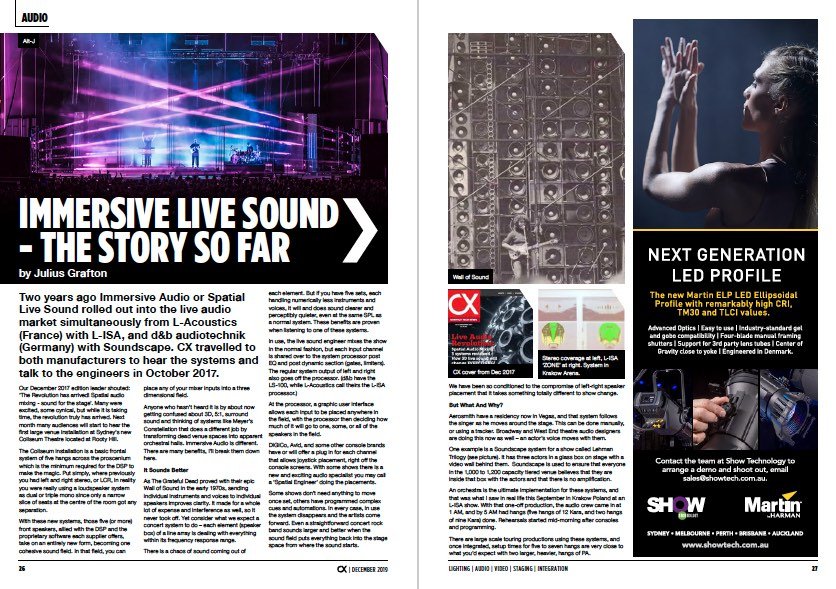
CX Magazine – Dec 2019 Entertainment technology news and issues for Australia and New Zealand – in print and free online www.cxnetwork.com.au
© CX Media
Subscribe
Published monthly since 1991, our famous AV industry magazine is free for download or pay for print. Subscribers also receive CX News, our free weekly email with the latest industry news and jobs.


